- 1 Billion pixels per second
- 31 Million triangles per second
- Transform and Lighting GPU
- 7.3Gb/s memory transfer (texture downloads, etc.
- Per pixel shading using register combiners and multiple textures
per pass (multi-textures)
- 2 Textures per pass ??
ATI Tech Radeon Additional Features
- 3 Texture per pass
- 3D volumetric textures (volume rendering, visualization, light volumes)
- Transform and Lighting GPU
Game Console Example: Sony PS2
Features
- 295 Mhz Emotion Engine, 6.2 GFlops, 128-bit processor
- 147 Mhz Rasterizer
- 25 million polys / second
- 2 Vector processing units, 1 scalar processing unit
What does this mean for interactive
photorealistic rendering?
- Multi-texturing in realtime -> more complicated images
- Textures applied to lights -> complicated light/shadow effects
- Light and surface textures with dot products allow bump
mapping
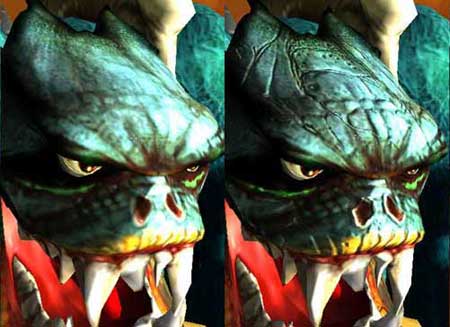
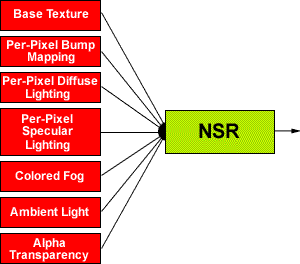
- Smooth shading -- need dot product per pixel for phong or
textured equivalent
- 3D textures allow volumetric effect, such as light volumes,
visualization, etc.
- Dependent texture reads important to get complex effects
- Procedural techniques - want as much flexibility as possible in
combining texture results and per pixel processing
- fragment programmability
- fragment dot product
- flexible register combiners and rich set of operations
- Example Developments include Stanford's Real-Time Shading Language
PC Graphics Chips
- Are they going to stay around -
see editorial at Microdesign Resources
- Hardware
Graphics Basic Rendering Overview from Microdesign Resources
- 3D Graphics Pipeline from Hardware point of View:
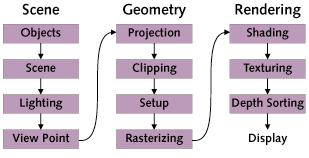
- Nvidia's view of the Graphics Pipeline
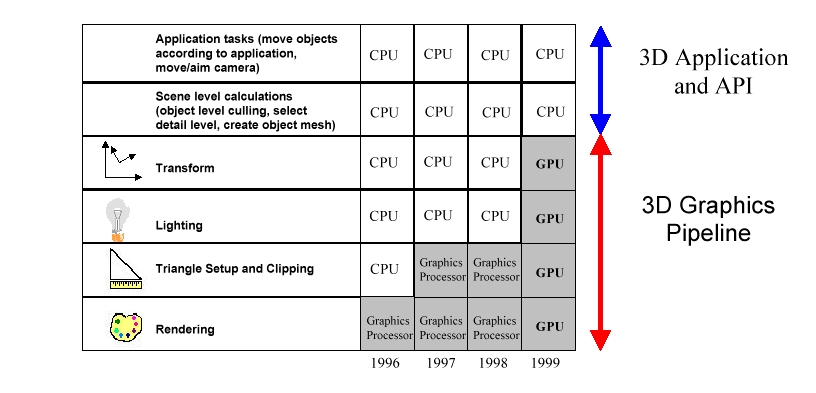
- Advantage of Shading example:
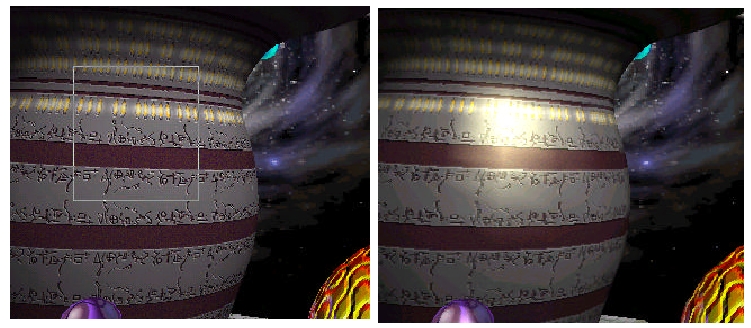
- Advantages of having Texturing and Lighting on the GPU
- Free up CPU for what?
- Bandwidth, Load Balancing
- Where/How are they calculating what
- Why is their method faster/cheaper than on a CPU?
- Light Maps and Vertex Lighting
- Light Maps
- Per-pixel rasterizer
Main Page




